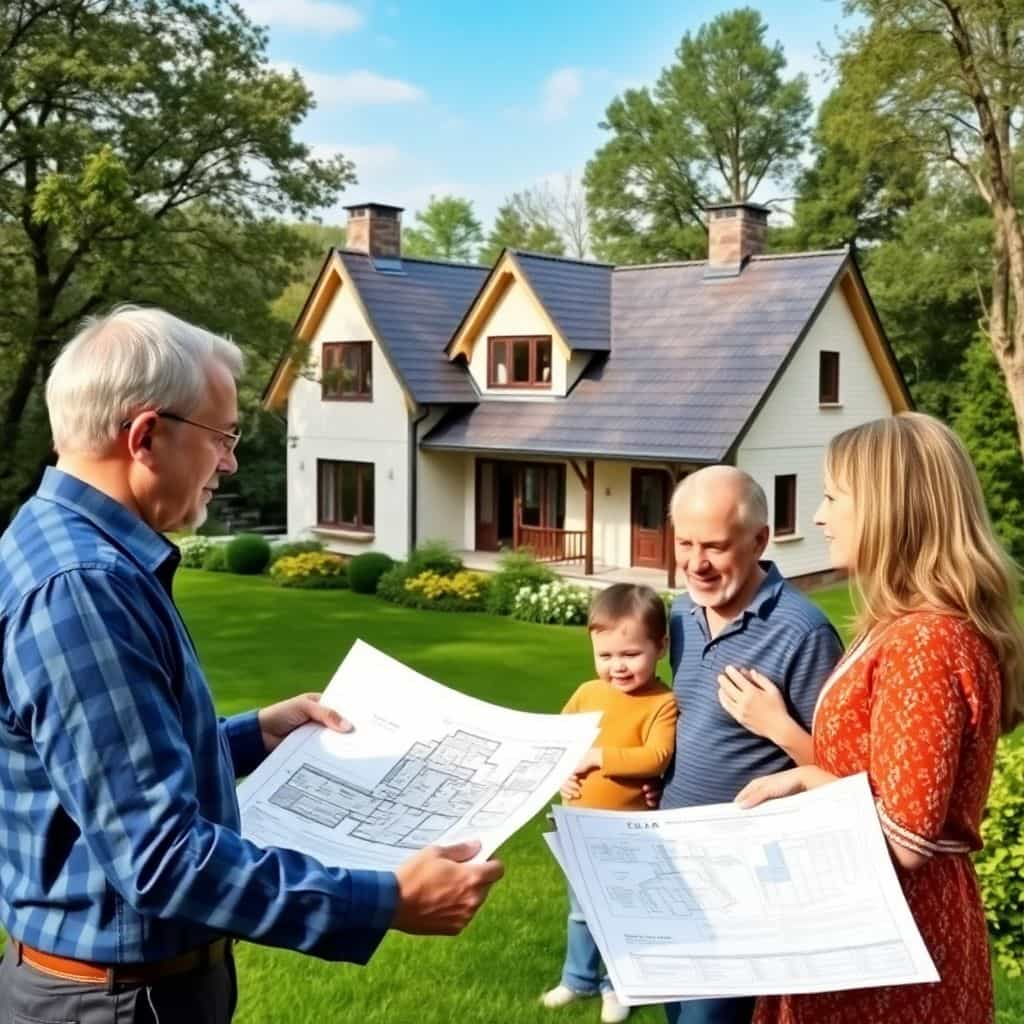The ambition of owning an independent house continues to captivate individuals worldwide. From the allure of added privacy to the charm of having a personal garden, the dream of this real estate pinnacle stands in contrast to the numerous challenges it entails. Understanding the process, the costs involved, and making the right comparisons between proposals are crucial steps in this undertaking.
The journey to purchasing an independent house begins with a profound evaluation of financial capability. One of the primary considerations is securing an adequate mortgage, which starts with a thorough assessment of one’s credit score and potential down payments. Historically, interest rates have fluctuated significantly, dictating how affordable home ownership becomes. Today, with rates still moderate, potential buyers must consider both fixed-rate and adjustable-rate mortgages, each offering distinct advantages based on future financial forecasts.
For instance, a fixed-rate mortgage provides stability with an unchanging interest rate, allowing homeowners to plan long-term budgets without fear of fluctuating payments. On the other hand, adjustable-rate mortgages might offer lower initial rates but come with the risk of increases that reflect market changes. Economists like Joseph Kaplan from the Housing Financial Institute advocate for cautious optimism, suggesting that understanding personal long-term plans and market conditions should guide mortgage choices.
In Italy, a country renowned for its picturesque landscapes and historical charm, the buying process is further characterized by regional variations in property prices. Northern regions typically present higher costs compared to the South, largely due to economic activity and demand. Prospective buyers must weigh these factors against lifestyle preferences, since choosing between a bustling urban abode and a tranquil countryside dwelling significantly impacts both cost and quality of life.
The option of building a house from scratch provides ultimate personalization but introduces complexities from zoning laws to construction logistics. It necessitates collaboration with architects and contractors, which influential figures like architect Renzo Piano describe as a synergy of art and science. This approach may also require an extended timeline and frequently exceeds preset budgets, thus making it imperative for buyers to maintain flexibility and thorough planning.
Moreover, comparing existing properties involves analyzing various aspects beyond mere price. Location remains a fulcrum, affecting accessibility, resale value, and community aspects. Historical anecdotes highlight how famed novelist Agatha Christie attributed her mystery-writing success partially to the tranquil seclusion of her Torquay home, a lesson in how location can shape one’s lifestyle.
Home inspections are essential to uncover potential issues such as foundational weaknesses or outdated electrical systems. Engaging a certified inspector can save prospective buyers from unforeseen repair costs. Moreover, a strong emphasis on energy efficiency is becoming a non-negotiable aspect, with modern houses increasingly integrating green technologies that not only reduce utility bills but also increase a property’s marketability.
In terms of proposals, different real estate agencies may present properties with varying degrees of attractiveness based on hidden costs and perceived values. Openness regarding fees and history of the houses is crucial. The experience of buyers like Mark and Susan Davenport, who shared their story on a popular real estate podcast, highlights the importance of transparency and due diligence – their initial dream home turned costly due to uninspected mold infestation.
Another vital consideration is the potential for customization. Existing houses that allow for modifications present an appealing option for many. Updates such as modern kitchens or added outdoor spaces can significantly enhance a property’s value and livability. However, it’s essential for buyers to assess whether these renovations align with local zoning requirements and budgetary constraints.
Ultimately, the decision to purchase an independent house is not merely transactional but profoundly personal. It requires a careful balance of emotional satisfaction and financial prudence. Expert real estate strategist Linda Reynolds emphasizes approaching this venture with an educated perspective, ensuring that choices today lead to satisfaction and security in the future.
To assist future homeowners in navigating these waters, practical resources include consultations with financial advisors, engaging reputable real estate agents, and utilizing technology platforms for real-time market comparisons. Community forums and user reviews also offer invaluable insights from those who have undergone similar journeys.
In summary, purchasing an independent house involves a series of strategic decisions that hinge on market analysis, financial preparedness, and personal aspirations. By meticulously comparing options and understanding each proposition’s subtleties, buyers can find not just a house, but a cherished home.
You may also like
The Perks and Challenges of Buying a Detached House in the Suburbs
Buying a detached house in the suburbs offers a tranquil lifestyle with potential financial benefits. This article delves into cost considerations, advantages, and options for suburban homes, offering a comprehensive comparison of the most appealing market proposals.
The Intricacies of Acquiring a City Center Apartment: Proposals, Prices and Perks
Acquiring an apartment in the city center offers numerous advantages, including access to amenities and a vibrant lifestyle. However, it also presents challenges such as high prices and limited availability. This article explores proposals, costs, advantages, and issues associated with purchasing a central city apartment, while providing a comparison of the most competitive offers available.
The World of Bathtubs
The humble bathtub has undergone a remarkable evolution, offering consumers a plethora of choices from luxurious freestanding models to accessible designs for the elderly. This article explores the newest trends, models, and market dynamics in the bathtub industry, providing insights into the innovations and economic factors affecting purchasing trends worldwide.
Bathroom: Style and functionality in Shower Designs
The shower industry is undergoing a remarkable transformation with innovative designs, technologies, and market trends shaping the future of bathroom fixtures. From shower enclosures to combo units and walk-in showers, consumers are now enjoying a variety of options for style, functionality, and value for money. This article delves into the latest trends, new models, and best offers available, providing insights into geographical purchasing behaviors and emerging technologies in the shower market.
